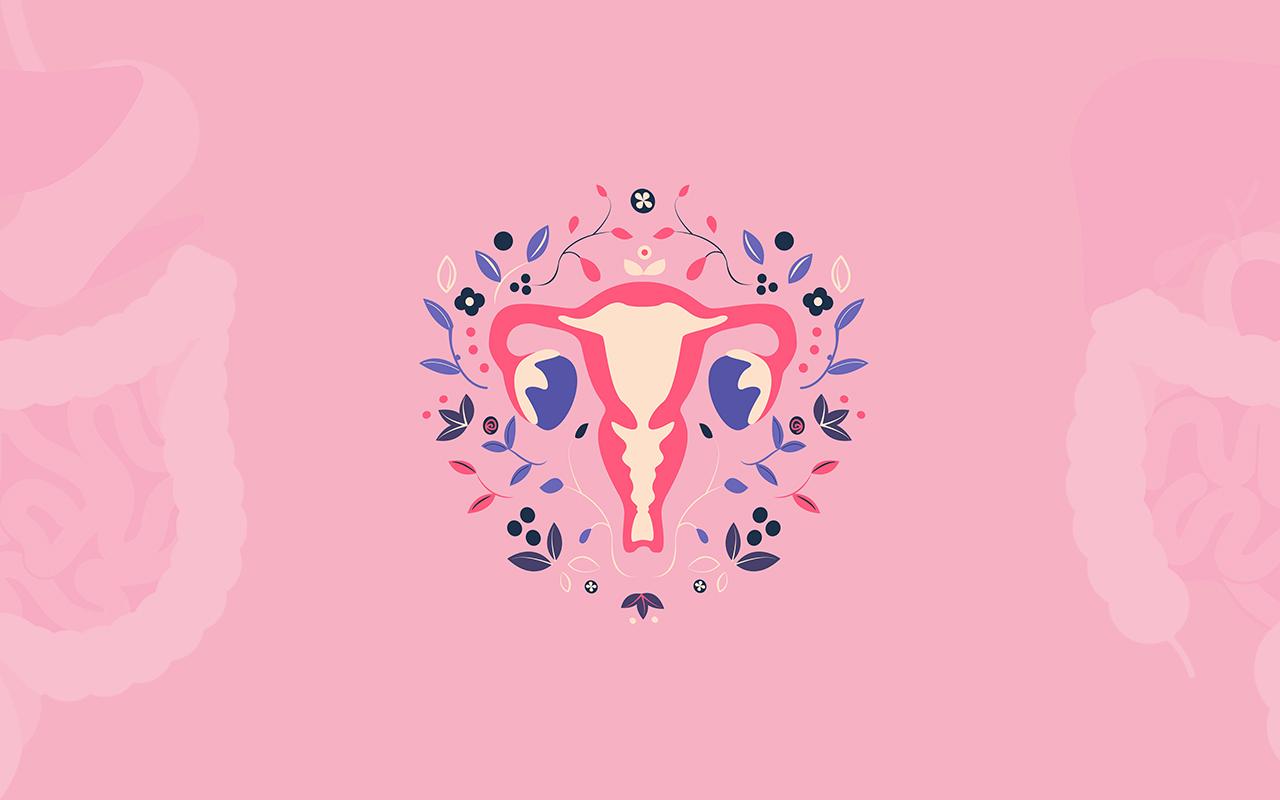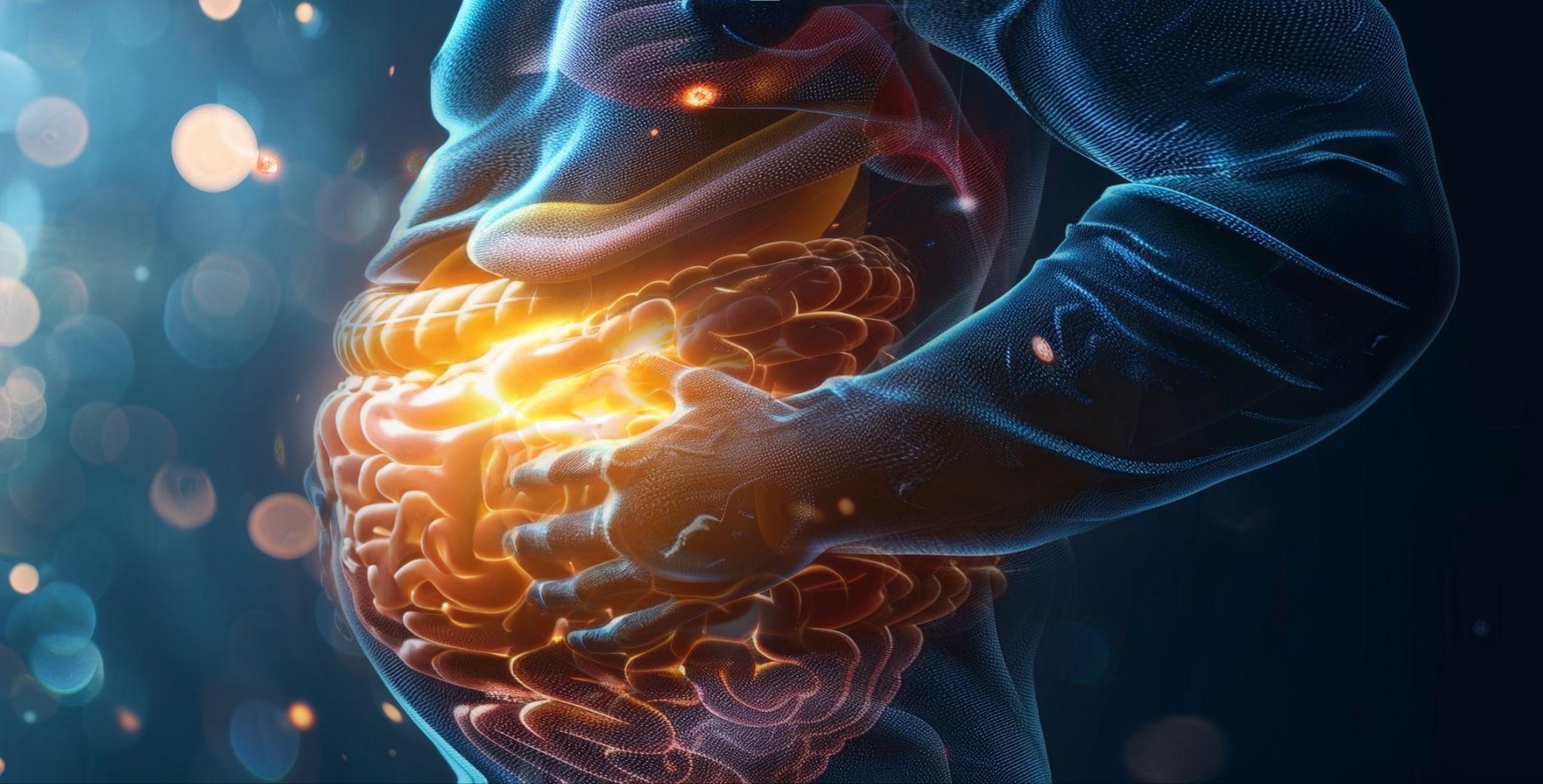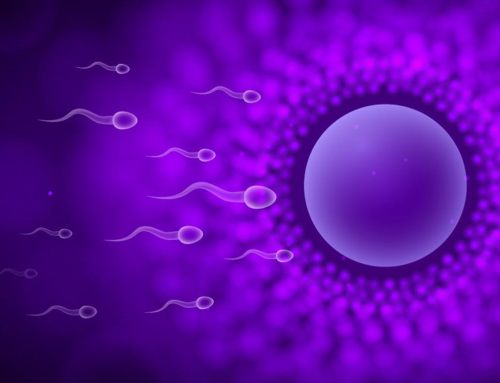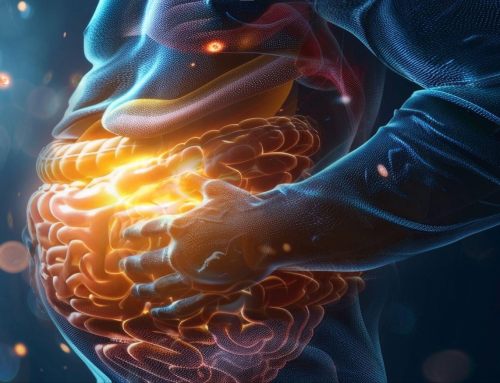The Relationship Between Gut Health and Menopause
Menopause, the waning of reproductive capability in women as they age, involves a change in female hormones that can impact mood, sleep, digestion, and many aspects of quality of life. Once the menses cease for 12 or more months, official menopause has begun. However, some negative hormone-related symptoms can be felt long before menopause, sending women to seek medical help for relief. Balancing female hormones is a tricky path, and patients, as well as practitioners, must often have patience. The root cause can be teased out with testing and implementation of treatments. However, many women give up on the process long before finding relief.
What is now becoming evident in the balancing of female hormones is the impact of gut health on menopause and its symptoms. The gastrointestinal tract and menopause both have significant, sweeping effects on the body. Practitioners treating menopause are getting interference from gut health issues and vice-versa. There is now considerable evidence that gut health plays a role in menopause, and the hormones of menopause play a role in gut health. This article explores some of the dynamics in this reciprocal relationship and some possible strategies to alleviate suffering.
What is Menopause?
Transitioning from child-bearing to post-child-bearing status is a complex process involving many factors. A woman goes from having regular menstrual cycles to perimenopause (missing a menstrual period in the last three months) to postmenopausal (no menstrual periods in the previous 12 months). Cessation of menses means that the cascade of hormones that allow fertility and conception are waning to the point of irreversibility. Of course, removing the uterus induces medical menopause. These stages of fertility weakening to infertility primarily depend on hormone estrogen levels.
The Role of Estrogen in Menopause
Estrogen is one of the predominant steroid hormones in female physiology that determines fertility via the menstrual cycle. The ovaries make most of the estrogen in a woman’s body. However, it’s fascinating that the adrenal glands and fat cells can also produce estrogen (1), and estradiol (the most active form of estrogen) can even be increased by a bacteria in the gut, Lactobacillus plantarum.
Estrogen has many roles and plays a part in the following (2-8):
- Reproductive health – through stimulating the growth of eggs in the ovaries, maintaining the thickness of the vaginal wall, and maintaining the lining of the uterus
- Brain health – by influencing blood flow and lowering inflammation
- Mood maintenance – through influencing serotonin and endorphins
- Bone and muscle health – by influencing porosity and resorption in bone and influencing the extracellular matrix of muscle
- Heart health – by affecting blood circulation, stabilizing blood pressure, and impacting levels of cholesterols
- Gastrointestinal health – through estrogen receptors involved in irritable bowel syndrome (IBS), inflammatory bowel disease (IBD), gastroesophageal reflux disease (GERD), and contributions to inflammation, the transit time of food through the GI tract, and affecting hormone balance
Low Estrogen
Estrogen impacts so many aspects of general health that when it is imbalanced, it may not be evident that there is a common root cause creating disparate symptoms. Typically, the imbalance that occurs in menopause is one of estrogen deficiency or fluctuating estrogen due to a natural “aging out” of the reproductive years. The state of low estrogen, deficient estrogen, or wildly fluctuating estrogen in perimenopause and menopause shoulder most of the blame for negative symptoms. Low estrogen does not necessarily come only from the onset of menopause, and there are other reasons estrogen levels might be compromised, such as hypothyroidism or adrenal issues. However, many negative menopause systems are primarily due to the effects of substandard estrogen levels or wide swings in estrogen levels as a result of aging.
Estrogen Metabolism & the Estrobolome
Circulating estrogen can be inactivated and eliminated through urination or defecation. However, if gut flora is imbalanced, estrogens may not be eliminated. Instead, these estrogens may be reabsorbed by the intestine, travel to the liver, and be returned to the bloodstream in a slightly more dangerous form. Whether estrogens are recirculated or excreted depends on the levels and activity of the estrobolome, which is the genetic material of gut microbes that can metabolize and regulate the metabolism of estrogen. Conjugated estrogens can be excreted, but deconjugated, unbound estrogens are recovered and put back into circulation. Deconjugated estrogens are active and can bind to estrogen receptors (9) all over the body, including the brain, liver, colon, skin (10), and enteric nervous system (ENS), which is embedded directly in the wall of the gastrointestinal system (11).
Poor Gut Health & Estrogen Fluctuations in Menopause – An Overlap of Symptoms
It is not well known that menopause and poor gut health share similar symptoms. Unfortunately, this can lead to misdiagnoses or conflating the two health issues. However, just because they share the same symptoms, it doesn’t mean the mechanism of action or underlying pathology is the same. Below are examples of some shared symptoms between menopause and poor gut health, with brief explanations of the physiology driving them:
Fatigue – feeling deeply tired (12)
Gut health: in part due to low gut diversity (13)
Menopause/perimenopause: extreme fluctuations in estrogen levels or low estrogen affecting thyroid or adrenal functions or as secondary to sleep loss due to hot flashes (14)
Mood changes, mood disorders, depression (12-14)
Gut health: activation of inflammation due to dysbiosis is associated with a variety of mental illnesses, including severe depression (13)
Menopause/perimenopause: extreme fluctuations in estrogen levels or low estrogen (15) negatively affect mood, possibly through the medium of inflammation
Constipation or diarrhea – transit time of waste can be very fast, causing diarrhea, or very slow, causing constipation, and may include secondary symptoms such as abdominal pain or bloating
Gut health: due to dysbiosis (imbalance in gut flora) (16, 17); examples include small intestine bacterial overgrowth (SIBO), Candida (overgrowth of yeast in the lower bowel), irritable bowel disease (IBD), or other imbalances such as inflammation
Menopause/perimenopause: due to effects of estrogen on intestinal motility (18)
Inflammation – a reaction of the immune system to an irritant or offending agent (19), releasing different kinds of cells (such as white blood cells) to counter physical trauma or pathogens
Gut health: the linings of the digestive tract (including the small and large intestines) can become inflamed due to irritations from dysbiosis (SIBO, Candida overgrowth), direct contact from medications or ingested substances, damage to villi that line the small intestine, and increased permeability of the small intestine
Menopause: estrogen can have both pro and anti-inflammatory effects, but low estrogen causes an increase in reactive oxygen species (ROS) and pro-inflammatory cytokine immune responses (20).
It is necessary for the practitioner to determine the root cause (or causes) of the symptoms that can be shared by menopause and poor gut health. Though the conditions can organically occur separately, menopause and poor gut health can also influence and exacerbate each other. Next is an exploration of how each condition can affect the other.
GUT HEALTH CAN AFFECT MENOPAUSE
There are many ways that compromised gut health can affect menopause, so the list below represents only a fraction of the possibilities. However, these seem to make up the bulk of an unhealthy gut’s contributions to menopause symptoms that cause women to seek relief. The gut-related conditions below can create symptoms, causing problems on their own, but they can also exacerbate existing menopause symptoms or even be mistaken for menopause symptoms. These gut-related conditions are often the silent partners underlying unpleasant symptoms associated with menopause.
Inflammation (systemic or local)
- Leaky gut activation of the immune system – Many things can damage the small intestine lining, causing it to be more permeable than usual. Poor diet, excessive non-steroidal anti-inflammatory drugs (NSAIDs), medications, and pesticide or insecticide residues can all cause the gatekeepers in the semi-permeable membrane of the small intestine to fail. Instead of continuing their breakdown in the small intestine, large food particles go through the “leaky gut” and into the circulation. In circulation, the large food molecules are mistaken as foreign invaders by the immune system, which activates the immune system. The result can be local and systemic inflammation. Inflammation may be experienced as abdominal pain, aching joints, or other symptoms.
Systemic inflammation and inflammation in the bowel may be picked up by C-reactive protein (CRP, hsCRP) tests, secretory IgA tests, and other blood tests. The efficacy of intestinal permeability tests is debatable. However, these urine tests (after drinking a challenge drink) can give a general idea about intestinal permeability and malabsorption.
- Candida overgrowth in the lower bowel – Candida, typically Candida albicans, is a fungus common in the digestive tract, the reproductive tract in women, and even on the skin. It can take advantage of certain conditions in the large intestine and increase beyond what is healthy (21). Candida’s growth is typically kept in check by beneficial bacteria (probiotics). However, if antibiotics are used to treat an illness, the bacteria that would keep Candida in check die, allowing Candida to grow out of control. Its overgrowth in the large intestine can lead to inflammation locally in parts of the bowel.
Candida can also gain the upper hand in the large intestine’s microbial landscape if the diet is very high in sugar, its primary food source, or is fortified by a high amount of yeast in the diet. Candida overgrowth is often associated with diarrhea, cramping, anal itching, headaches, body aches, and an odd effect on cognition described as feeling “spacey” or “spaced-out.” A stool test can identify candida overgrowth.
Malabsorption
- Celiac disease (CD) – Also known as “gluten-sensitive enteropathy,” this sensitivity of the villi in the small intestine to gluten causes the villi to be damaged, preventing the proper absorption of nutrients through its surface (22). CD symptoms include diarrhea or constipation, fatigue, bloating, or abdominal pain. Over time, the malabsorption of nutrients such as iron, the fat-soluble vitamins A, D, E, and K, zinc, selenium, and B vitamins lead to a cascade of other symptoms (23). Zinc, selenium, vitamin D, and folate help maintain estrogen balance, meaning that deficiencies or disturbances can exacerbate symptoms.
- Small intestine bacterial overgrowth (SIBO) – Celiac Disease gets all the attention regarding malabsorption issues. However, SIBO is often the culprit underlying malabsorption issues. SIBO occurs when bacteria increase in the small intestine, which under normal circumstances has very low levels of bacteria.
Weak stomach acid is often a cause of SIBO because, instead of being burned by the stomach acid, bacteria can make it past the cauldron of the stomach into the small intestine. However, food poisoning is often the battering ram that floods the small intestine with high amounts of bacteria. Once in the small intestine, if the bacteria can survive in that environment, it may be able to establish dominance and continue to grow there.
Unfortunately, bacterial overgrowth in the small intestine can cause plenty of problems, from increasing the permeability of the small intestine to causing cramping, gas, diarrhea, and constipation. The overgrowth of bacteria in the small intestine can compete for nutrients, damage the epithelium lining where nutrients are absorbed, cause local inflammation, and negatively affect the absorption of fats and carbohydrates (24).
Malabsorption of nutrients can negatively affect hormone production, upsetting the balance of hormones in menopause. Diagnosis is made through breath tests that pick up gas byproducts of bacteria bubbling up from the small intestine into the breath.
Hormone balance
- The microbiome impacts hormone balance – Through examining the genetic material of the microorganisms in the gut (the microbiome), a relationship between gut dysbiosis and dysfunction of the estrobolome has been established. Low microbial diversity and imbalances between gram-negative and positive bacteria in dysbiosis have been associated with disruption of estrogen metabolism and the presence of inflammation (9). The estrobolome directly influences levels of circulating estrogen through conjugation or deconjugation, as mentioned previously.
- The estrobolome affects the endocrine system beyond estrogen – Estrobolome activity in postmenopausal women was positively correlated to progestin metabolites, which can impact menopausal symptoms such as hot flashes.
Improving Gut Heath Improves the Health of Menopausal Women
Testing for and treating gut health issues is imperative for an accurate diagnosis and to make treatments more efficient. Desired outcomes from gut health treatments would be to resolve the root cause, reduce inflammation, reduce the overall burden on the immune system, increase absorption of vitamins and minerals, and help stabilize hormones.
Addressing gut health might consist of the following:
1. Remediating SIBO & through herbal or prescription medicine treatment – A course of specific antibiotics such as Rifaxamin or a treatment of nutritional supplements (aromatic essential oils, berberine, oregano, garlic, herbs) can reduce the number of bacteria in the small intestine. Note these remedies can also affect bacteria in the large intestine, so following treatment with probiotics to favorably influence gut flora is wise. Such treatments often give relief to bowel-related symptoms in a matter of days.
2. Remediating dysbiosis through herbal, prescription medicine, or pre and probiotic treatments – Imbalances discovered through stool testing allow the practitioner to determine potential remedies in cases of dysbiosis. Re-testing the stool after treatments can help provide confidence that the imbalance is resolved.
3. Manipulating diet to provide microbiota with appropriate inputs for desired outputs – Stool or blood testing can give clues to dietary approaches that may remedy the symptoms. For example, low estrogen may be countered by supplementing with plant phytoestrogens, which are the plant equivalent of human estrogen and do fit into the human estrogen receptor sites, having estrogenic effects. Many over-the-counter (OTC) nutritional supplements for menopause are phytoestrogens and have a fair chance of alleviating symptoms. Polyphenols, available in OTC capsules, can be converted to estrogen-like compounds by the microbiota.
4. Using anti-inflammatory diets such as gluten-free, FODMAP, or whole foods – Highly processed foods are very inflammatory. Eating a whole foods diet with high amounts of raw vegetables, healthy fats containing Omega 3 anti-inflammatory compounds, and colorful fruits full of antioxidants can reduce inflammation rather than create it. If symptoms are severe, it is worth experimenting with removing gluten, which can be very inflammatory for some. The “FODMAP” diet eliminates familiar sources of irritating or hard-to-process compounds from the diet and gives relief to many. Inflammation caused by diet can exacerbate menopause symptoms, so reducing dietary sources of inflammation can go a long way toward alleviating menopause-related inflammation and body aches.
5. Using an elimination diet or testing for food sensitivities – Food sensitivity testing allows one to determine IgA and IgG immune activation by specific food compounds and is an easy way to find irritating substances that need to be eliminated from the diet. Yet, food sensitivity testing is costly. However, a low-cost alternative is the typical elimination diet. The silver lining in the elimination diet is that its information is unique to the patient following the diet. Patients can attempt to add foods back one at a time to see if symptoms reappear.
6. Removing hormone disruptors from the diet – Parabens, phthalates, and bisphenol A (BPA) are compounds in our environment that can disrupt sex hormones. Due to greater awareness, finding paraben-free cosmetics, shampoos, and soaps is now possible. Phthalates make plastic items more flexible and are found in many cosmetics and personal care products due to their contact with plastic containers (25). Not using nail polish or perfume can reduce phthalate exposure (26). BPA is a compound in plastics, and the easiest way to reduce BPA exposure is to avoid drinking from plastic bottles and prevent using plastic dishes in microwaves (27).
7. Trying adaptogens – Maca is an adaptogen shown to help balance estrogen. While maca does not supply phytoestrogens, if estrogen is low, maca can help increase blood levels and alleviate menopause symptoms (8).
MENOPAUSE CAN AFFECT GUT HEALTH
Determining the source of gut issues first can help reduce confusion and determine root causes, and also make treatments more straightforward. Keep in mind that menopause can and does affect the gut as well, so if gut issues cannot be resolved, it may be due to the effects of estrogen or fluctuating menopause hormones on the system. Hormones during menopause may affect the gut in the following ways.
Changes in hormones due to menopause may lead to changes in the microbiome, which can impact gut health. Many studies show a lowering of microbial diversity upon menopause (or induced menopause) (28), though a recent study by Jackova et al. says, “Sources of variability in microbiota composition are more related to interindividual differences than hormonal status.” Remarkably, there is a reasonably consistent association of low microbial diversity in the gut after menopause (29). Despite the consistency, the degree of change in microbial diversity is not very big (28), but even small changes can translate into symptoms.
Hormone changes can affect how quickly food travels through the digestive tract. The sex hormones progesterone and estrogen enable muscles to work smoothly, including the motion of peristalsis in the gut, which squeezes food through the tube of the digestive tract. Estrogen levels can affect gastrointestinal motility (18). Lower estrogen levels decrease motility, slowing the transit time of food through the GI tract.
Low estrogen can increase inflammation; adequate estrogen can resolve inflammation. Macrophages are white blood cells that are part of the immune system. They are a line of defense against foreign matter in the body, engulfing and “eating” the foreign matter, releasing inflammation mediators simultaneously. Interestingly, estrogen speeds the resolution of this process, alleviating the associated inflammation (30).
In studies regarding the relationship between bone loss and menopause, a lack of estrogen increases pro-inflammatory cytokines, which can be reversed by increasing estrogen levels (20). Lowering inflammation through estrogen reduces the immune burden on the body, relieving symptoms manifesting in the gut as well as other parts of the body.
Conclusion
The feedback loop between menopause and gut health symptoms can create a confusing set of symptoms that confound patients and practitioners. Some testing upfront to determine the presence of gut issues may shorten treatment time and increase the efficiency of menopause treatment if gut issues are resolved first. From the evidence presented, it appears that even if gut issues cannot be positively established, a strategic diet, supplements, and avoidance of certain substances could improve menopause symptoms.
Sources:
- Estrogen’s effects on the female body [Internet]. Estrogen’s Effects on the Female Body | Johns Hopkins Medicine. 2022 [cited 2023Apr25]. Available from: https://www.hopkinsmedicine.org/health/conditions-and-diseases/estrogens-effects-on-the-female-body
- Estrogen: Functions, uses, and imbalances [Internet]. Medical News Today. MediLexicon International; [cited 2023Apr25]. Available from: https://www.medicalnewstoday.com/articles/277177
- Estrogen: What it does and 5 benefits [Internet]. Cleveland Clinic. Cleveland Clinic; 2023 [cited 2023Apr25]. Available from: https://health.clevelandclinic.org/what-does-estrogen-do/
- Low estrogen: Causes, effects, and treatment options [Internet]. Medical News Today. MediLexicon International; [cited 2023Apr25]. Available from: https://www.medicalnewstoday.com/articles/321064
- Väänänen HK, Härkönen PL. Estrogen and bone metabolism. Maturitas. 1996 May;23 Suppl:S65-9. doi: 10.1016/0378-5122(96)01015-8. PMID: 8865143.
- Chidi-Ogbolu N, Baar K. Effect of estrogen on musculoskeletal performance and injury risk [Internet]. Frontiers. Frontiers; 2018 [cited 2023Apr25]. Available from: https://www.frontiersin.org/articles/10.3389/fphys.2018.01834/full
- Estrogen: Hormone, function, Levels & Imbalances [Internet]. Cleveland Clinic. [cited 2023Apr25]. Available from: https://my.clevelandclinic.org/health/body/22353-estrogen
- Chen C, Gong X, Yang X, Shang X, Du Q, Liao Q, Xie R, Chen Y, Xu J. The roles of estrogen and estrogen receptors in gastrointestinal disease. Oncol Lett. 2019 Dec;18(6):5673-5680. doi: 10.3892/ol.2019.10983. Epub 2019 Oct 11. PMID: 31788039; PMCID: PMC6865762.
- Baker JM, Al-Nakkash L, Herbst-Kralovetz MM. Estrogen–gut microbiome axis: Physiological and clinical implications. Maturitas. 2017;103:45–53.
- Eyster KM. The Estrogen Receptors: An Overview from Different Perspectives. Methods Mol Biol. 2016;1366:1-10. doi: 10.1007/978-1-4939-3127-9_1. PMID: 26585122.
- Andrée-Anne Poirier, Wei P, Sepehr E, Regan JC, Poirier AA, Perez-Pardo P, et al. Differential contribution of estrogen receptors to the intestinal therapeutic effects of 17β-estradiol in a murine model of parkinson’s disease [Internet]. Brain Research Bulletin. Elsevier; 2022 [cited 2023Apr25]. Available from: https://www.sciencedirect.com/science/article/abs/pii/S0361923022001630
- How your gut microbiome impacts your health [Internet]. Cleveland Clinic. Cleveland Clinic; 2023 [cited 2023Apr25]. Available from: https://health.clevelandclinic.org/gut-microbiome/
- Safadi JM, Quinton AMG, Lennox BR, Burnet PWJ, Minichino A. Gut dysbiosis in severe mental illness and chronic fatigue: A novel trans-diagnostic construct? A systematic review and meta-analysis [Internet]. Nature News. Nature Publishing Group; 2021 [cited 2023Apr25]. Available from: https://www.nature.com/articles/s41380-021-01032-1
- Menopause fatigue: Causes, treatment, and supplements [Internet]. Medical News Today. MediLexicon International; [cited 2023Apr25]. Available from: https://www.medicalnewstoday.com/articles/menopause-fatigue
- Zhang J, Yin J, Song X, Lai S, Zhong S, Jia Y. The effect of exogenous estrogen on depressive mood in women: A systematic review and meta-analysis of randomized controlled trials. J Psychiatr Res. 2023 Apr 10;162:21-29. doi: 10.1016/j.jpsychires.2023.04.002. Epub ahead of print. PMID: 37068417.
- Ohkusa T, Koido S, Nishikawa Y, Sato N. Gut Microbiota and Chronic Constipation: A Review and Update. Front Med (Lausanne). 2019 Feb 12;6:19. doi: 10.3389/fmed.2019.00019. PMID: 30809523; PMCID: PMC6379309.
- Li Y, Xia S, Jiang X, Feng C, Gong S, Ma J, Fang Z, Yin J, Yin Y. Gut Microbiota and Diarrhea: An Updated Review. Front Cell Infect Microbiol. 2021 Apr 15;11:625210. doi: 10.3389/fcimb.2021.625210. PMID: 33937093; PMCID: PMC8082445.
- IBS and menopause: Relationship, hormones, and more [Internet]. Medical News Today. MediLexicon International; [cited 2023Apr25]. Available from: https://www.medicalnewstoday.com/articles/ibs-and-menopause
- Inflammation: What is it, causes, symptoms & treatment [Internet]. Cleveland Clinic. [cited 2023Apr25]. Available from: https://my.clevelandclinic.org/health/symptoms/21660-inflammation
- Martín-Millán M, Castañeda S. Estrogens, osteoarthritis and inflammation. Joint Bone Spine. 2013;80(4):368–73.
- Brent A. Bauer MD. Why try the candida cleanse? [Internet]. Mayo Clinic. Mayo Foundation for Medical Education and Research; 2022 [cited 2023Apr25]. Available from: https://www.mayoclinic.org/healthy-lifestyle/consumer-health/expert-answers/candida-cleanse/faq-20058174
- Celiac disease [Internet]. Mayo Clinic. Mayo Foundation for Medical Education and Research; 2021 [cited 2023Apr25]. Available from: https://www.mayoclinic.org/diseases-conditions/celiac-disease/symptoms-causes/syc-20352220
- Adams J. What are the most common vitamin deficiencies in celiac disease patients? [Internet]. Celiac.com. 2021 [cited 2023Apr25]. Available from: https://www.celiac.com/celiac-disease/what-are-the-most-common-vitamin-deficiencies-in-celiac-disease-patients-r3371
- Adike A, DiBaise JK. Small intestinal bacterial overgrowth. Gastroenterology Clinics of North America. 2018;47(1):193–208.
- Phthalates factsheet [Internet]. Centers for Disease Control and Prevention. Centers for Disease Control and Prevention; 2021 [cited 2023Apr25]. Available from: https://www.cdc.gov/biomonitoring/Phthalates_FactSheet.html
- Six tips to avoid phthalates after study highlights health harms, billion-dollar costs [Internet]. Environmental Working Group. 2023 [cited 2023Apr25]. Available from: https://www.ewg.org/news-insights/news/2021/10/six-tips-avoid-phthalates-after-study-highlights-health-harms-billion
- Bisphenol A (BPA) [Internet]. National Institute of Environmental Health Sciences. U.S. Department of Health and Human Services; [cited 2023Apr25]. Available from: https://www.niehs.nih.gov/health/topics/agents/sya-bpa/index.cfm
- Jackova Z, Stepan JJ, Coufal S, Kostovcik M, Galanova N, Reiss Z, Pavelka K, Wenchich L, Hruskova H, Kverka M. Interindividual differences contribute to variation in microbiota composition more than hormonal status: A prospective study. Front Endocrinol (Lausanne). 2023 Mar 8;14:1139056. doi: 10.3389/fendo.2023.1139056. PMID: 37033235; PMCID: PMC10081494.
- Singh V, Park Y-J, Lee GD, Unno T, Shin J-H. Dietary regulations for microbiota dysbiosis among post-menopausal women with type 2 diabetes. Critical Reviews in Food Science and Nutrition. 2022;:1–16. 30. Villa A, Rizzi N, Vegeto E, Ciana P, Maggi A. Estrogen accelerates the resolution of inflammation in macrophagic cells. Sci Rep. 2015












